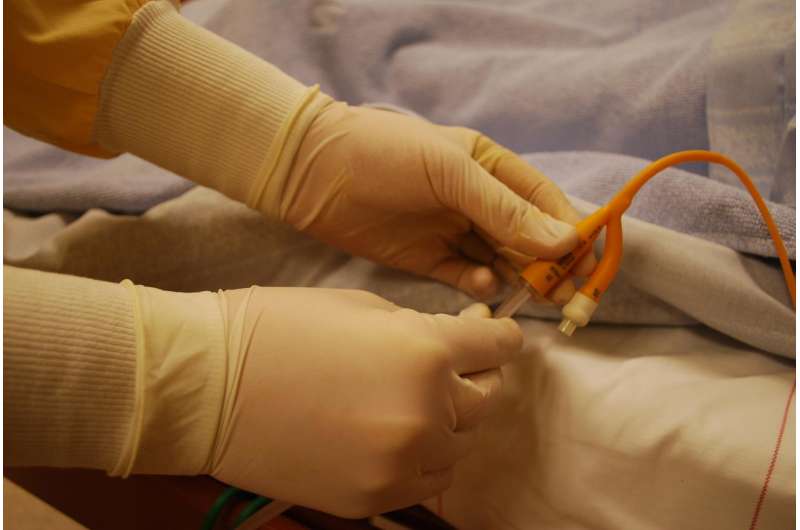Large catheters, small veins, increase blood clot risk for cancer patients

A world-first study led by the University of South Australia has found that cancer patients receiving chemotherapy intravenously have more than double the risk of developing a blood clot or thrombosis if the vein is too small and the catheter occupies more than 45 percent of the vein.
The finding, published in the British Medical Journal Open, is the first time that catheter-vein ratios (CVRs) have been studied in different patient groups to determine the risk of thrombosis depending on how much the catheter obstructs blood flow.
Cancer itself (especially leukemia and other blood cancers) and the chemotherapy used to treat it both increase thrombosis risk, and the catheters increase this risk even further if blood flow is restricted, according to Dr. Rebecca Sharp, a UniSA vascular access device researcher who led the study.
"Catheters are commonly used to infuse medications or liquid nutrition, but they come with risks, particularly if the catheter is too big for the vein. Previous research has shown they can impede blood flow by up to 80 percent," Dr. Sharp says.
Data from 2438 patients with a peripherally inserted central catheter (PICC) was analyzed from four hospitals across Australia and New Zealand, identifying 39 cases of thrombosis.
"Many clinicians use a CVR of less than 33 percent, where the catheter occupies only one third of the vein. Others adhere to a 45 percent limit. However, there is a lack of evidence showing which CVRs are safe for individual patients. Some clinicians don't measure veins at all."
PICCs are commonly used internationally. They are convenient, easy to insert and cheaper than other devices such as a port (a flexible tube placed into a vein in the chest), which is invasive and requires surgery. However, PICCs are riskier, researchers say.
"We have identified how to reduce some of these risks, by recommending specific limits on catheter-to-vein ratios for individual patients. These results will help nurses and doctors to provide safe care and reduce harm for people with cancer," Dr. Sharp says.
The analysis did not find any increased risk of blood clots for non-cancer patients treated for infections via catheters.
More information: Rebecca Sharp et al, Catheter to vein ratio and risk of peripherally inserted central catheter (PICC)-associated thrombosis according to diagnostic group: a retrospective cohort study, BMJ Open (2021). DOI: 10.1136/bmjopen-2020-045895

















